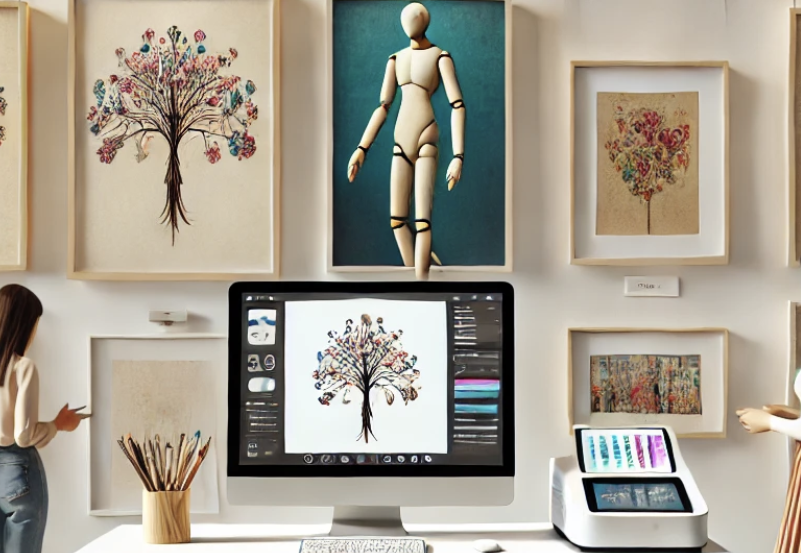Week 9 Rethinking My Exhibition: “Is Everyone an Artist in the AI Era?”

This Wednesday, during our class discussion, I shared my latest curatorial ideas with Frances and my peers. Their feedback was extremely helpful and prompted me to critically re-evaluate my previous exhibition concepts. I realised that my earlier plans may have relied too heavily on the technological spectacle of AI at the expense of deeper social and artistic issues that resonate with my current stage as an emerging curator.
Thinking back to our group’s conversations in the Summerhall, I decided to shift the focus of the exhibition to explore the central question: ‘Is everyone a true artist in the age of artificial intelligence?’ This relates directly to Joseph Beuys’ famous quote “Everyone is an artist” and invites a deeper exploration of how AI can democratise or further complicate access to art-making.
My revised exhibition format now involves inviting art students (currently enrolled and with formal art training) to create artworks using popular AI platforms such as Midjourney or Stable Diffusion. To actively engage visitors, I will set up an interactive AI art creation station at the entrance to the exhibition, where visitors with no formal art background will be able to generate their own artwork using simple text prompts. They will then be encouraged to print these works and add them directly to the exhibition space alongside the work of formally trained artists.
This approach prompted reflection on several important questions discussed in class:
Is AI lowering the barriers to making art, or creating new complexities and divides?
Does formal art education retain its value and relevance when AI can quickly produce complex visuals?
Are aesthetic judgements still valid? Can viewers truly distinguish between works created by artists using AI and those created by non-artists?
Collective feedback from my peers clarified that choosing student artists over established professionals was more in line with my identity as an emerging curator. It also made the exhibition more authentic, manageable, and resonant with our audience.
Through our discussions, I gained a clearer understanding of the power of collaboration. Sharing ideas openly has allowed me to significantly adapt and deepen my curatorial philosophy, reflecting my own personal growth and learning process.
Next steps will include selecting appropriate student artists, finalising the venue (which may be a university gallery or smaller creative space), and preparing interactive AI stations to ensure meaningful audience participation.
I am genuinely excited about how these improvements will evolve, and I am very grateful for everyone’s thoughtful contributions this week!



